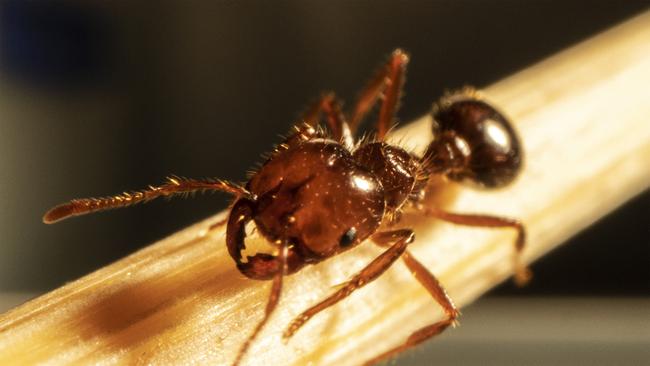Fire ant funding shortfall remains
Fire ants have crossed into NSW but five governments have not contributed to the national fire ant eradication program.

The national fire ant eradication program remains underfunded, despite the threat of a countrywide outbreak increasing significantly with the spread of the invasive insects from Queensland into NSW last month.
The Australian Capital Territory (ACT) on Friday became the fourth government to contribute its share of the funding for the $592.85m program.
Victoria, Western Australia, South Australia, Tasmania and the Northern Territory remain holdouts, leaving a $135.42m hole in the budget.
The shortfall to the agreed funding target has raised concerns that there will not be enough money to properly halt the spread of the ants, which can devastate communities and farming land.
“Invasive species are marching down Australia’s East Coast. There’s no doubt about it, this is a crisis,” ACT Environment Minister Rebecca Vassarotti said.
“Every level of government must work together to protect Australia,” Ms Vassarotti said.
“Without joint action, this invasive species will reach every part of Australia. Australia’s environment is seriously threatened by red fire ants.”
Invasive Species Council advocacy manager Reece Pianta said it would take a nationwide effort to stop the spread of the ants.
“As a national problem, all states contribute to the solution,” Mr Pianta said.
“Victoria had a fire ant near miss when a queen was intercepted on a pot plant shipment in February this year,” he said. “The Fremantle fire ant infestation was only recently declared eradicated.”
The Invasive Species Council has said the lack of funding from other states, and the delay in federal funding, had negatively affected surveillance, eradication, enforcement and education activities this year.
Mr Pianta said eradication of fire ants was still possible, but would require considerably more funding and called for an urgent review from the federal government.
“We have underestimated fire ants since 2001 when they were detected in Australia – putting more into eradication now can turn the fire ant tide and save Australia billions in the long run,” he said.
“Fire ants are a danger to human health, harm native animals and habitats, cut agricultural output, impact tourism and our way of life.”
Fire ant nests were discovered on council-owned land in a newly developed industrial estate in Murwillumbah, in the Tweed shire, in late November, sparking concern the pests would become entrenched in the rural district and spread further into NSW.
Authorities destroyed the Murwillumbah nests and have been trying to identify where the infestation came from.
The apparent vector was soil brought into the estate, raising concerns more contaminated material might have been spread to other parts of the state.
The outbreak comes despite the federal and state governments spending hundreds of millions of dollars to contain the spread in South East Queensland over the past two decades.



